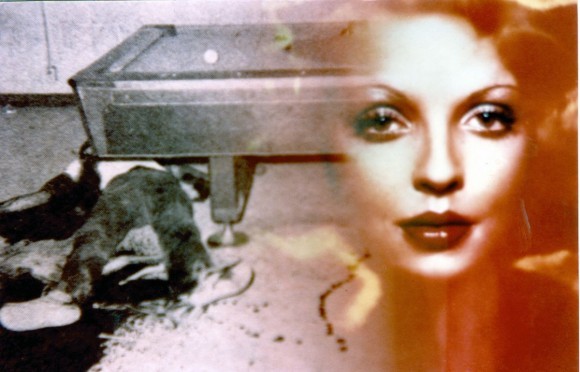David Askevold
22 Jul - 25 Sep 2011

David Askevold
Ten States in the West (detail), 1978
From the collection of the Canada Council Art Bank.
© David Askevold Estate
Ten States in the West (detail), 1978
From the collection of the Canada Council Art Bank.
© David Askevold Estate
DAVID ASKEVOLD
The Disorientation Scientist
22 July - 25 September 2011
This summer we present the first UK solo exhibition of work by Canadian artist, David Askevold. From the end of the 1960s to his death in 2008, Askevold was a pioneer in experimental video, sound, photography and text and an influential teacher at some of America’s most celebrated art schools. This survey of his work brings together seminal pieces from the 1970s, his most important installations, documentation of performances and collaborative works he made with artists Mike Kelley and Tony Oursler.
Curated by Anne Pontégnie and organised in association with Le Consortium, Dijon.
“I have at times thought of David’s work as being a kind of structuralist take on Kenneth Anger’s psychosexual film rituals. Can delirium, while being experienced, be analysed? Wouldn’t doing so disrupt delirium’s seductive, mysterious qualities? Well, Askevold seemed to have his cake and eat it, too. He was a disorientation scientist.”
Mike Kelley
The Disorientation Scientist
22 July - 25 September 2011
This summer we present the first UK solo exhibition of work by Canadian artist, David Askevold. From the end of the 1960s to his death in 2008, Askevold was a pioneer in experimental video, sound, photography and text and an influential teacher at some of America’s most celebrated art schools. This survey of his work brings together seminal pieces from the 1970s, his most important installations, documentation of performances and collaborative works he made with artists Mike Kelley and Tony Oursler.
Curated by Anne Pontégnie and organised in association with Le Consortium, Dijon.
“I have at times thought of David’s work as being a kind of structuralist take on Kenneth Anger’s psychosexual film rituals. Can delirium, while being experienced, be analysed? Wouldn’t doing so disrupt delirium’s seductive, mysterious qualities? Well, Askevold seemed to have his cake and eat it, too. He was a disorientation scientist.”
Mike Kelley
